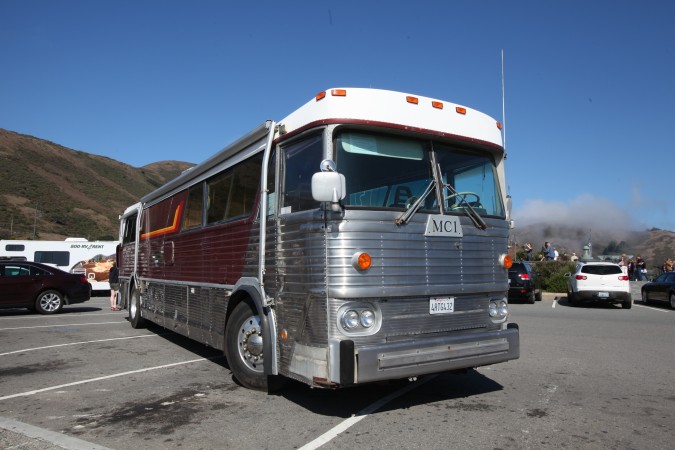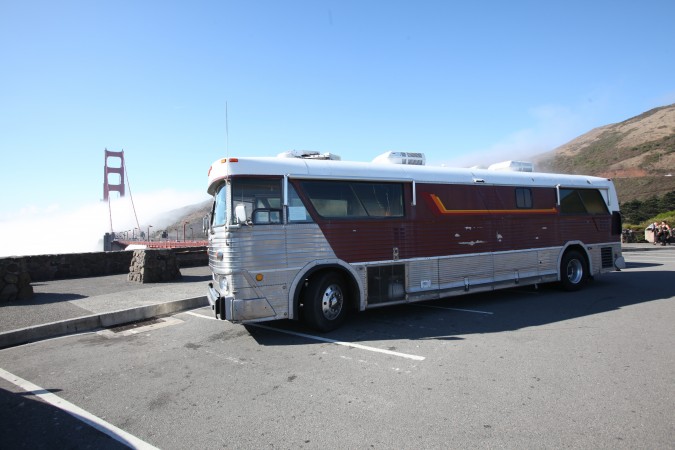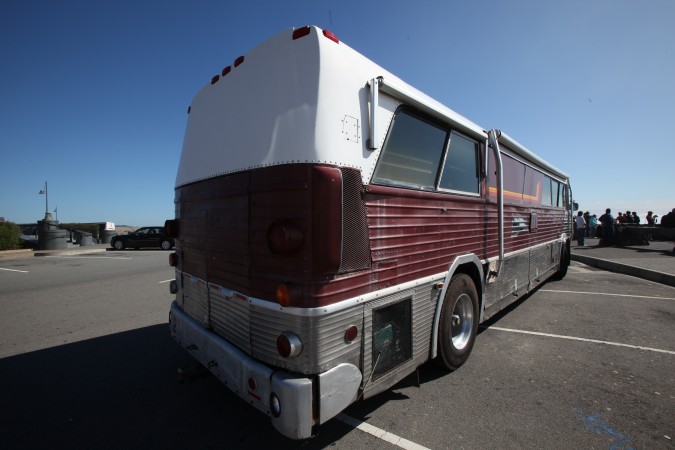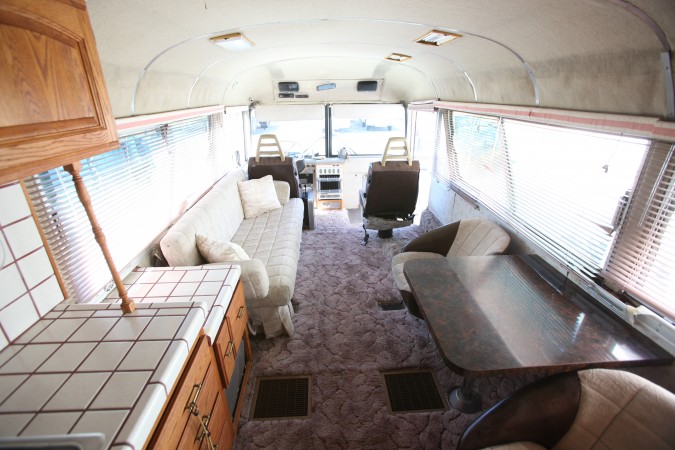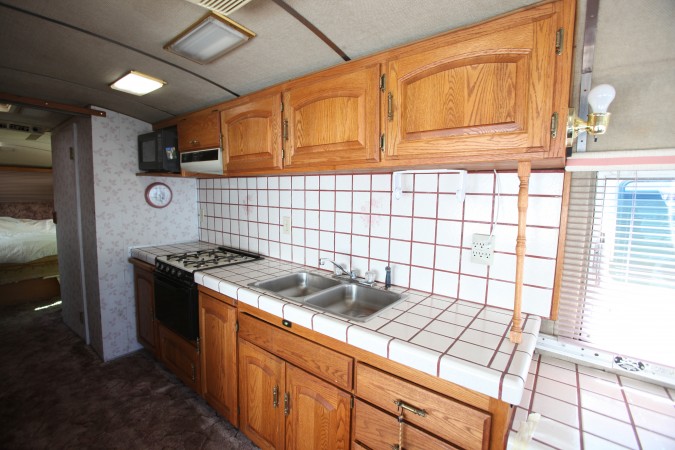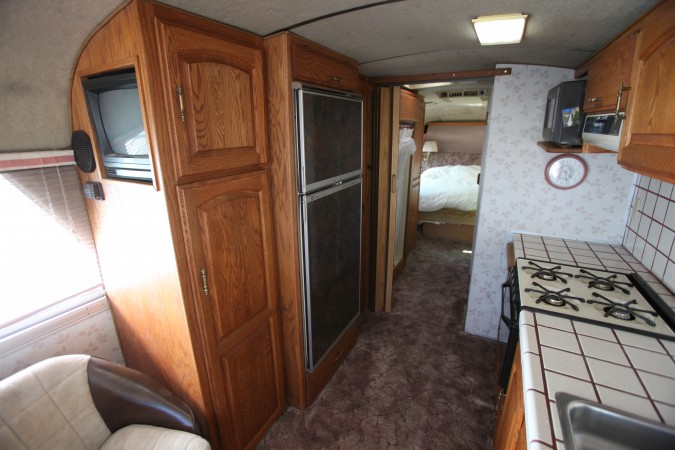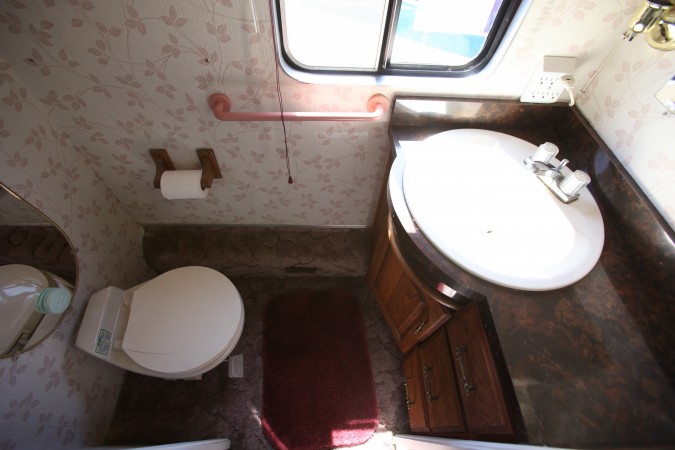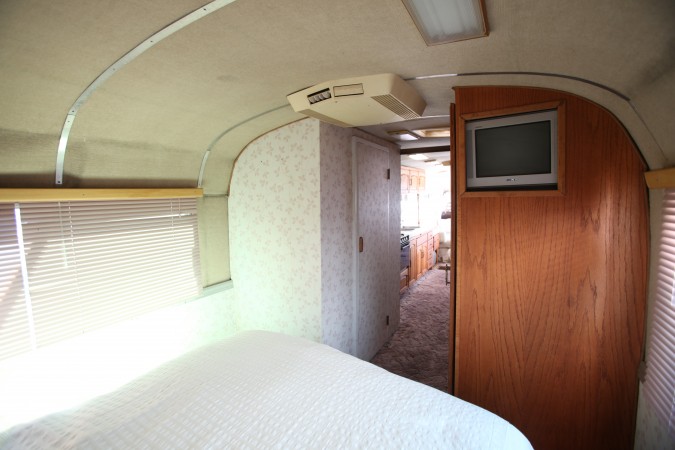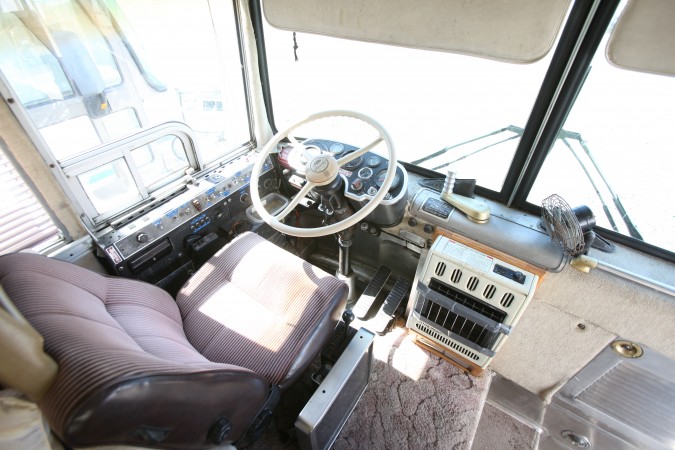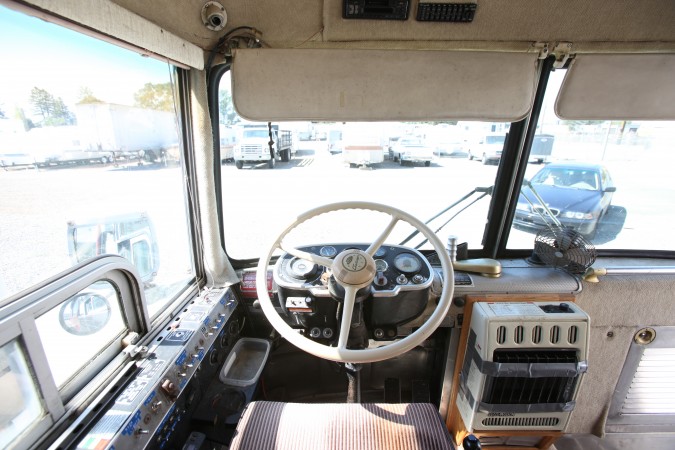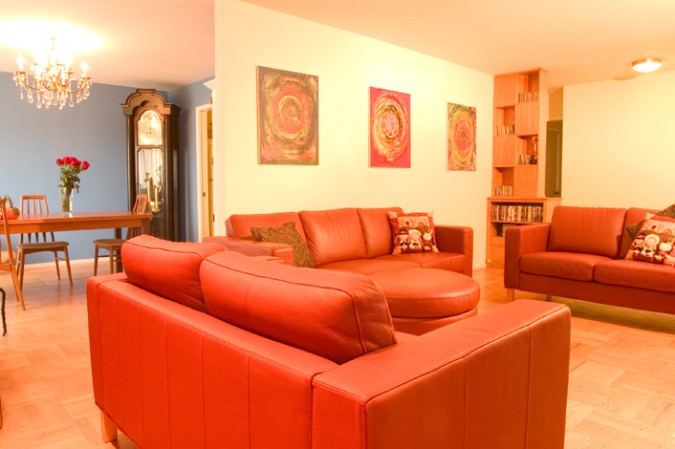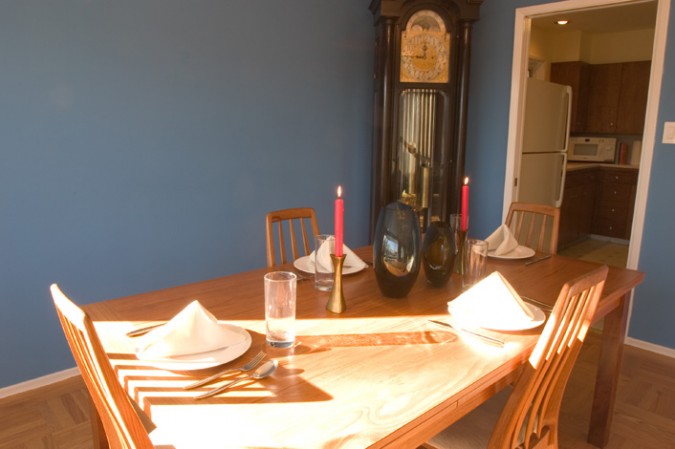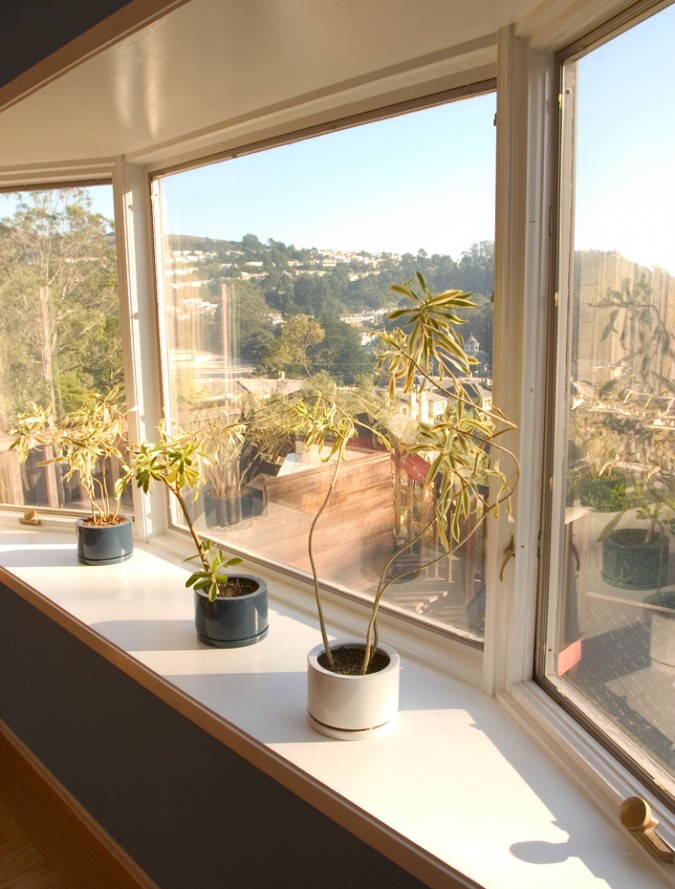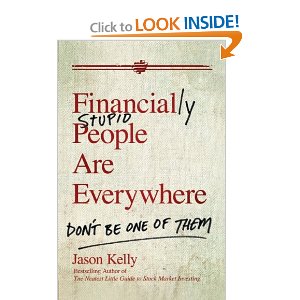Archive for the ‘Home’ Category
New Avenue, Inc. Ribbon Cutting Ceremony For First Completed Project in Berkeley, California USA
Yesterday I attended the ribbon cutting ceremony for the first completed home built by New Avenue, Inc., which was founded by my friend Kevin Casey.
I estimate 200 people came by to see the 420 square foot backyard detached house. Kevin persuaded the mayors of Berkeley and El Cerrito to speak at the ribbon cutting. I introduced myself to both mayors after the conclusion of the formal event, and they were both very personable and warm.
I shot a lot of pictures and video, but I’ve not had time to edit it. So today I will just post the video of the formal spoken remarks. Later this week I will post the walkthrough video I shot, which is fascinating because you see all the attendees clamoring to examine every corner of this really charming house.
I spoke with many of the people in attendance, including a woman who lived recently in Hawaii in a house this size. She’s a graduate student at UC Berkeley now, and her enthusiasm for what New Avenue is trying to do was contagious.
Kevin Casey’s New Avenue Homes Ribbon Cutting Ceremony January 8, 2011
One of the advantages to my sponsoring the Business Plan Competition at University of California at Berkeley is that I get to meet interesting, bright, motivated students. How does this work exactly? I’m a judge for the competition, and that puts me into regular contact with the student organizers. In about 2007, Kevin Casey was one of the organizers, and we got to know each other just a little bit. But I remembered him, and when he got into the tiny house movement, I took notice and contacted him.
He’s taking a different approach than I plan with my Green Homes venture I haven’t started but probably will at some point. But his approach is valid and he’s making solid progress.
Kevin Casey’s company is New Avenue, Inc. Here’s their mission statement, which I copied directly from their website for precision:
“In the United States 40 million of the 70 million single family homes have just one or two people living in them. These under-used homes were designed for easy building, not quality living, and they drive a seemingly endless list of negative effects such as sprawl, traffic congestion, lifelong “homeowner” debt, and costly energy use. This incredible waste of space is the result of the traditional model of accommodating growth through suburban tract home development. The US Census projects a need for 12.5 million additional homes by 2020 and we need a new way of creating these homes.
New Avenue is an alternative development model that enables communities to grow internally as opposed to externally. We do this by building homes on underutilized properties within existing neighborhoods. Our homes are designed to accommodate the true diversity of our family types, namely those of us that live in one or two person households. We call this the small plot development model and it can end suburban sprawl as we know it, accommodate the demand for 12.5 million new homes we need and bring financial and environmental sustainability to families.
New Avenue delivers a turnkey solution for building these one and two person homes. We have unique expertise in design, land use rights, financing, permitting and pre-fab manufacturing that allows us to create building opportunities where it is either illegal or unprofitable for the old fashioned banks, builders and developers to operate.
By creating new legal and financial products we eliminate the barriers that foil the old way of building and enable the creation of tens of thousands of right-sized homes that are energy efficient, attractive and healthy to live in. The homes we build provide financial security to landowners and strengthen our communities without consuming any additional green space.
The installation of small second homes can create community, enhance health, produce renewable energy, and provide a financially sustainable alternative for property owners and investors to shape the future of our communities.”
Kevin’s New Avenue has built its first home, close by in Berkeley, California. It’s in the back yard of a detached house that belongs to a UC Berkeley professor. I’ve toured Kevin’s tiny house twice, once while about half done and once after it was completed. It’s a charming, warm and livable home. It’s a mere 420 square feet, but I think a single person could comfortably live in it for years. The only thing it really needs that it doesn’t have is a washer and dryer.
Kevin arranged for no less than the mayor of Berkeley to be on hand for the ribbon cutting ceremony, which is scheduled for tomorrow, Saturday, January 8, 2011 at 2:30pm. The preliminary festivities start earlier at 1pm. I plan to attend, and if you’re in the area, I encourage you to attend as well. Kevin has BIG plans for New Avenue, and I wish him the best of success in his ambitious entrepreneurial adventure.
My friend Sara Olsen likes what Kevin’s doing as well. Here’s an article she wrote for GreenBiz.com entitled The Social ROI Green, Affordable Housing. She writes that Kevin plans to build a stunning 10,000 tiny houses in the next few years. Kevin shared that detail with me as well, but I didn’t know if it was a number intended to be publicized. Since Sara published it, I’ll emphasize her point here. Kevin certainly thinks big. Maybe I’ll one day be talking about shipping 10,000 shipping container Green Homes… I hope so.
Please fill in your email address in the upper right corner of this page if you’d like to subscribe to this blog. I’m trying to build my subscriber base, which is why I’m cluttering up some of these posts with this request. If you like my writing, please also leave me a comment and tell your friends about this blog. Thank you!
1967 MCI 5A Challenger Bus Conversion For Sale
The time has finally come for me to find a new home for my beloved first bus conversion, a proud Motor Coach Industries model 5A Challenger from 1967, The Summer of Love.
I love this bus, and I’ll no doubt shed some tears when the happy new owner drives off into the sunset to start building their golden dreams on the open road.
The story behind this bus is worth sharing. This story was related to me by John Ridley, the former owner. He said in about 1992 six Arizona fireman retired at the same time and all bought passenger buses for themselves. Together, they all converted these six buses to motorhomes, or ‘bus conversions’. Then, after a period of time, the fireman all sold the buses at the same time and all bought boats. The story ended there, but something tells me they later sold the boats and all bought some new toy at once.
John Ridley bought one of these fireman converted buses. John served for the US in the Vietnam War, where he was injured. He could walk for many years after the war, despite his injuries. Later in life, after a career as a truck driver, he was confined to a wheelchair. This didn’t stop him from maintaining and driving his bus conversion. He had hand controls installed for the accelerator and brakes, and a cruise control so he could relax on the highway and not have to apply constant pressure with his hands on the hand controls.
His wheelchair was manual and snapped apart into four pieces easily. He could back the chair up to the passenger door, use his arms to shift his position from the chair to the bottom step, where he could sit while he snapped apart his chair and hoisted its component pieces over his head to place them inside the conversion. Then he would use his arms to ‘climb’ the stairs, back first. He could then scoot across the floor to the driver’s seat and pull himself into position by grabbing the steering wheel. He wasn’t going to let his disability interfere with his love of buses.
Once he got to his destination, his wife, a school bus driver by profession, would unload their Harley Davidson motorcylcle with sidecar from the trailer they towed behind the MCI. Then they would go motorcycling together with his wife driving the Harley and John riding in the sidecar. This all worked out for years. Sadly, John’s disability progressed to the point he couldn’t do routine maintenance on the conversion any more so he felt he needed to find a new owner for it. I was thrilled to buy this vehicle from John, and he spent two days showing me how to drive it well. He also hand printed an instruction book telling me how to operate the systems. He also had the original MCI owner’s manuals, and I will include all of this material with the bus when I sell it.
The above picture shows the kitchen area. The range is fueled by propane, and it features four burners plus an oven. There are pull out cutting boards to the left and right of the range. The sink has two bowls, and there is a sprayer for cleaning up with. There is an exhaust hood over the stove which vents to the outside, and the hood has a light in it. There is a microwave oven to the left of the range hood. The cabinets doors are solid oak and were custom made for this conversion.
The photo immediately above shows the television set for the living room, inside the cabinet. The cabinet wall also has the room thermostat for the forced air furnace. There is also one of four stereo speakers, visible just above the thermostat. The refrigerator runs on 110 volts AC or propane. It has a separate freezer section, like a home refrigerator.
This is a full size mattress in the bedroom. The reading lights have three way bulbs in them, for reading or mood lighting. The nightstand cabinets are custom made and the door fronts are made from solid oak and match the rest of the cabinets throughout the rolling home.
The photo above shows the toilet and vanity. The vanity is custom made and matches the rest of the cabinets. The Formica matches the front of the refrigerator. The sink is real ceramic, not plastic like you would find in some RVs.
The photograph above shows the bathroom in the center. The shower stall is across the hall from the bathroom, behind the TV, which is in the closet. Again, this cabinetry is all hand made. One of the two air conditioners can be seen on the ceiling over the hallway. The kitchen can be seen in the distance.
The photo above shows the driver’s seat. There is a propane heater to the right of the seat, which can be used alone or with the forced air furnace. The handle to open the passenger door can be seen to the right of the steering wheel. This handle still works. There is a fan for the driver to the right of the door handle. The conversion has an automatic transmission, and the shift knob is to the driver’s right, next to the seat cushion.
This is the view from the driver’s seat. You can see my blue BMW 525i right above the driver’s fan. The view above the traffic from this seat is outstanding, and one feels very secure driving this vehicle, as it’s rock solid and dependable.
The engine is a Detroit Diesel 8V-71. It’s in good shape, and I welcome potential buyers to take the bus conversion to their own mechanic for inspection prior to purchase. I’ll even let your mechanic keep the vehicle overnight so he can attest to how easily it starts when cold.
In 2002 I drove this conversion from San Francisco, California to New York City, New York, over a 2 1/2 month period. The only trouble I had was two flat tires, but that was to be expected since the tires that blew were old. I had no mechanical trouble with the rest of the vehicle, which was comforting.
There is a gas Onan 6,500 watt generator with about 600 hours on it. That means it has a lot of life left in it. It starts right up even if it’s not used for over a year. This is a non-electronic model, so it’s much more reliable over the long term than a modern electronically controlled model. The bus engine is also mechanical, so it’s likely to run forever, if maintained. There is nearly a full tank of diesel in the 100+ gallon tank, and I always stored it with a full tank, which is recommended for long term storage of any diesel vehicle.
There is no inverter, but it’s wired for a large inverter, and there is a 500 pound capacity battery slide installed as well. I moved the inverter to my RTS conversion, so that’s why there isn’t one included with this vehicle. However, the previous owner used the conversion the entire time he owned it without an inverter, so one is not needed since there is a very capable generator on board, with inside the vehicle remote start.
This vehicle is a pleasure to drive. There is very little play in the steering, since it has ‘new’ steering. You won’t grow tired correcting the steering like many other old buses. The air conditioning is powerful, and will keep the inside cool even in Las Vegas when it’s 107F out. I know because I stayed there a few days under such conditions.
Please contact me if you’d like to schedule a test drive. You don’t need a special license or training to drive this, believe it or not. If you don’t know how to drive a bus conversion, I’ll show you. That’s how I learned, while in the buying process, so it can be done.
If you want to learn more about bus conversions, visit the two primary bus conversion websites in the United States, BusNut.com and BusConversions.com. I am asking $5,000 for this bus conversion, which is a steal, as I paid $33,000 for it in 2002. The market for bus conversions was much stronger then, and the prices were much higher. Today they are really depressed, thus my low price. You’ll have a great time with this bus conversion.
Bus Conversions Magazine
I just wanted to give a plug to Bus Conversions Magazine. This is the magazine that got me hooked on this ridiculous yet fantastic hobby of converting a bus into a motorhome. I read their website daily, and I’ve learned a dramatic amount from the discussion forum the publisher hosts as a public service to subscribers and non-subscribers alike.
I’m sure they would like some more subscribers, as some of their readers had to group together to buy the magazine from the founder a while back to keep it afloat. The quality has gone way up under the new ownership. There used to be glaring typos throughout, but they have been mostly eliminated. I hope to become a columnist for this magazine one day, writing about my super green RTS conversion, now underway. I hope they will let me adapt my blog postings for print to get started!
I discovered the box in the upper right to subscribe to this blog has been broken for some time, so I don’t have as many subscribers as I otherwise would have. If you liked this post, and would like to subscribe, please type in your email address in the little box in the upper right. I won’t write useless nonsense to you, I promise. Thank you.
BBC Video ‘Good Neighbors’ Comedy Series About Urban Homesteading
My brother Andrew and his wife Krista gave me a simply wonderful Christmas gift 8 days ago. I can’t recall ever getting a more moving Christmas gift from anyone. Andrew bought me a paint set about 13 years ago, and that was a great gift in that it got me back into painting, which I hadn’t done since I was a child. And while I love to paint, and have decorated my house with my work, the paint set wasn’t as deeply important as what Andrew and Krista gave me this year. The special gift?
They got me the 1970s BBC Television series on DVD originally titled The Good Life. The series has been renamed Good Neighbors on the DVD packaging, but the video images themselves use the original title. The 4 disc set covers the complete 3 season run of the show.
Here’s the series summary from the back cover of the DVD boxed set:
“Good Neighbors is considered on of the best British sitcoms ever by critics and audiences alike and took North America by storm when it premiered here on PBS.
Tired of the rat race and looking for more from life, Tom Good decides to quit his job and become self-sufficient… all without leaving his cozy suburban home. His wife, Barbara, agrees to his outlandish plan, and without a second thought they’ve dug up their well-laid lawn and turned it into a vegetable plot. A goat, pigs, and chickens soon follow.
Their best friends and neighbors, Margo and Jerry Leadbetter, think they’ve gone mad, especially Margo, the ultimate middle-clas suburban snob. Can the Goods really live off the land in the London suburbs? Can the Leadbetters stand it if they do?”
I find this show so meaningful because I want to do what the Goods do in this show! I am advertising for housemates right now that want to raise chickens, goats and vegetables right in San Francisco. I hope to raise all the food we need to eat one day, although that’s a tall order and one that almost certainly can’t be met. But we may be able to get close, except for items like spices, rice, tea, tropical fruit and industrial products like soda and chocolate chips.
I don’t want to forgo outside income like the Goods do, however. The Goods barter and sell some of their crops to make the cash they need to pay their property taxes. They need no money for utilities since they turned them all off. They have a methane digester to convert the goat manure to methane gas, which they burn in a basement electrical generator to power their lights. They bartered their toaster and hair dryer for a rusty old wood fired kitchen range. They get their firewood by scouring the neighborhood for diseased fallen trees, which they roll back home in pieces on an old baby carriage turned wagon.
I don’t want to give away the whole series in this post, so I’ll leave now with just these titalating highlights. I’ll write episode reviews from time to time, to cover what happens in more detail. I’ve only watched less than half the series, but it’s clear that the self-sufficient money poor couple is much ‘richer’ than the nominally rich couple next door. Money doesn’t buy happiness rings through the series in numerous profound scenarios. I’ve tried to buy happiness before and I know it can’t be done, so this show resonates with me more than most. It’s just so charming, captivating, delightful and sweet that you should login to Netflix right now and start watching it on demand.
I discovered the box in the upper right to subscribe to this blog has been broken for some time, so I don’t have as many subscribers as I otherwise would have. If you liked this post, and would like to subscribe, please type in your email address in the little box in the upper right. I won’t write useless nonsense to you, I promise. Thank you.
Housemates wanted for urban homesteading in San Francisco
I’ve written here about my plan to start urban homesteading at my San Francisco home. I’ve got an ad running now on Craigslist.org, and I’ve met some fascinating people who’ve responded. Since the ad will come down once the house if full, and since I’m proud of the ad, I’m posting it here for posterity, and to make it easy to find the next time there’s a vacancy. Here’s the ad, in its entirety. Note that on Craigslist the pictures are located at the bottom, and are small. For this post, I interspersed the photos with the text, and made them larger.
Hello,
I started shopping at Rainbow Grocery on Folsom Street around the start of this year. Rainbow is an entirely organic, vegetarian coop, and it changed my life. I’ve lost 30 pounds without trying, and am back to the weight I was in college.
I started on this path after reading Omnivore’s Dilemma by Michael Pollan, the famed New York Times writer turned author. This book changed my life more than any other book, as it changed how I eat and how I feel, as a result of eating better. I’ve gone on to read lots more books about sustainable, healthy eating and living, including Farm City, by Noella Carpenter. She used the vacant lot behind her gritty Oakland apartment to start a community vegetable garden. Eventually, she began raising ducks, chickens and even two full size pigs. The book is fascinating and heartwarming and really moving.
That leads me to this advertisement. I want to turn my huge backyard (nearly a quarter city block in size) into a city oasis of farming. My backyard is on a South facing hill near UCSF and Golden Gate Park, so it’s in the path of sunlight all day. It’s already partly terraced. Here’s what I envision:
Renting out my three spare bedrooms to people interested in making an inviting home that takes daily advantage of the bounty I’m confident my yard can produce. I want to try my hand at so-called ‘urban homesteading’, but I don’t want to do it by myself. So I’m looking for likeminded people to participate.
I’m a good cook too, and love having dinner parties. I’m hoping that once I put this household together that we have group roommate dinners a couple of days a week, with everyone pitching in to make them fun.
Here’s a list of what I hope to have us do together in the big backyard:
1. Grow vegetables and fruit trees in the dirt
2. Set up a green house and practice so-called ‘aquaponics’ which is where fish and vegetables are grown in close symbiosis. A tank of fish contains a lot of fish poop, and the tank water is used to flood a grow bed of vegetables mounted over the tank. The roots of the vegetables draw up the fish poop and cleanse the water in the process. The newly clean water is released back into the fish tank, in a cycle that repeats 24 hours a day via a pump and timer. The vegetables grow 600% faster than in dirt, and the fish grow 200% faster than in the wild. Both the fish and the vegetables can be consumed. There are few weeds to deal with as the vegetables grow in a gravel base, not dirt, so there are no stray weed seeds in the soil to contend with. The fish are safer than wild fish since there is less chance of them encountering pollution. I have the equipment to set this up, but it’s not set up yet, so I haven’t tried it yet. I’ve read enough about it that I’m convinced it will work. High end restaurants in New York City get their produce from barges on the Hudson Bay that grow on board using aquaponics. The technology dates back thousands of years I’ve read.
3. Raise chickens.
4. Raise ducks.
5. Raise and milk two miniature dairy goats. Goat milk tastes better than cow’s milk, but at $16 a gallon at Rainbow Grocery, it’s too expensive for daily drinking. Having my own goats will help solve that problem.
I am not a vegetarian, but I don’t buy industrial meat. I shop at a local butcher shop and eat only grass-fed beef and well treated chickens. Yes, this costs twice as much as industrial meat, at a minimum, but the taste is better and I feel much better about it. Micheal Pollan’s description of what happens to industrially raised livestock is so disturbing that I haven’t bought any industrial meat at a grocery store since I read his book.
My last three housemates, who just moved out, were all vegetarians, so I don’t object to vegetarian housemates at all. I eat little meat, just a few ounces per main dish. I definitely don’t cook steaks or ribs or hamburgers. I do put meat in the great Chinese and Indian dishes I cook up. I’m a good vegetarian cook as well, since I did the cooking for the household group meals we have had here.
If you’ve read this far, you’re probably wondering what the rooms for rent are like. The smallest room is 10’ x 11’ and I’m asking $775/mo. The middle sized room is 10’ x 12’ and I’m asking $825/mo. The master bedroom is 11’ x 15’ and has its own full bathroom. I’m asking $995/mo for this room.
There is a large furnished living room, a dining room and kitchen. There is also a 12’ x 12’ food redwood deck off the living room, and this deck is on the second floor, so the view is particularly spectacular. There is a water spigot and electrical outlet on the deck, and there’s a tiled workspace and a charcoal Weber grill.
I’m an entrepreneur by profession, in the dot com world. I like having the house full of interesting people, which is what has me so interested in this project. I have a strong interest in the environment and my dream is to start a company manufacturing homes so green that they don’t need to be connected to the grid, but if they are they could send excess power back to the grid. In furtherance of this dream, I’m building a demonstration eco-home to test some of the super energy saving ideas I’ve read about, including a green aquaponics roof system.
Sadly, my house is not particularly green yet, so utilities historically have come to $75/mo per person when there are four people living here. I have the records on a spreadsheet to demonstrate this.
The house has a 6 meg per second DSL WiFi connection. There are cable TV, Ethernet and phone jacks and separately adjustable wall heaters in each bedroom. There is a real wood burning fireplace in the living room.
I’m looking for housemates that WANT to garden, experiment, raise livestock and share group household meals. You don’t need to have experience doing these things. I don’t have much experience gardening, but I can do anything I put my mind to, so I have no fear. I hope you’ll pitch in with taking care of the animals, since goats will stop producing milk if they are not milked everyday. I can’t keep up that schedule personally, since I sometimes travel for work and pleasure. But I’ll do my fair share and more, happily. I think this group household idea holds real merit, and that we’ll all benefit in many unforeseen ways from helping each other out. Our food bills should decline, and our food quality should go up. If you can’t see milking a goat, that’s OK. I’m sure some people will be able to help, and I don’t think the goats need four people to milk them daily. Even if I just find one housemate capable of milking the goats, that will be enough. Note that San Francisco permits chickens, ducks and miniature goats provided there’s space, and I have the space, so we don’t have to sneak around to do this project. Even so, we’ll be neat and considerate, since there are neighbors, who I’m good friends with.
I would expect you to help buy gardening supplies. I’ll provide the capital for things like setting up the aquaponics system and green house. But I can’t commit to buying all the consumables if I’m sharing three-quarters of the results… I hope you understand.
I’m not proposing getting free labor from my housemates. I’m proposing that we work together to take advantage of the huge backyard that’s sitting idle right in the center of San Francisco for the benefit of all of us. This is San Francisco and I’m sure there are hundreds of people who share my ideals of clean, green and self-sufficient living, but can’t do too much living in an apartment. I have enough space here we might be able to grow enough food to entirely live on. I don’t know for sure, but I suspect we could.
If you have an interest in raising bees that would be particularly great. I am someone afraid of bees so I don’t think I’ll pitch in on that project, but I LOVE the concept and I love honey, so I would be very supportive.
The rooms are all available immediately. I am willing to rent on a month-to-month basis, but I prefer that you have in mind to stay a while since it’s hard work finding compatible roommates. But since this situation is more collaborative than most shared housing situations, I recognize things could not work out, so I won’t try to tie anyone down with a term longer than a month.
I’m pretty clean, and so were my past housemates. We kept the common areas clean, and didn’t let dishes sit in the sink. Our rooms were a different story though, and I expect and am fine with rooms getting somewhat out of control. But that doesn’t mean you can leave pizza boxes around your room either… lol
Sorry, but this house doesn’t allow any smoking, inside or outside. There is a huge forest of eucalyptus trees in the backyard, and if they were to catch fire, the whole hillside would explode in flames. Also, please, no drug use or excessive alcohol use. While I want a group household with shared interests in eco interests, I don’t want a house of drug using partiers. I’m easy to get along with, and my roommates told me they loved living here. So I’m looking for kind, respectful and non-irritable people to share this special San Francisco oasis with.
To apply, please write a few paragraphs introducing yourself. In particular, please describe why you are interested in this shared housing situation, to make me certain you didn’t copy and paste your reply and actually read this ad carefully.
The three roommates who just moved out were all female. It was a totally cool vibe in the house. I’m a straight guy in my 40s. I’m open to both men and women living here, in whatever combination naturally happens. My past housemates were in their 20s and 30s, so if you’re younger, please don’t ignore this ad because I’m older. I’m definitely young in spirit, and I’ve got some fun, approachable hobbies. I’m a photographer and painter, for example.
The 36 MUNI bus stops right in front of the house, and there is plenty of free, unlimited time street parking by the house. You’ll rarely have to walk more than a 1/4 block from your car if you drive. It’s a 15 minute walk to the 9th Avenue and Irving Street shops, restaurants and bars.
I write a blog at http://kevinwarnock.com where you can learn more about me and my interests. You can see the website I made for the house, with big pictures, at http://sanfranciscohouseforrent.com
I’ve never tried to put together such a collaborative household before, so I don’t know what to expect. But I’ve thought about this for a long, long time, so I’m definitely motivated to make this work. I look forward to your thoughtful replies.
Warm regards,
Kevin
———————————–
I discovered the box in the upper right to subscribe to this blog has been broken for some time, so I don’t have as many subscribers as I otherwise would have. If you liked this post, and would like to subscribe, please type in your email address in the little box in the upper right. I won’t write useless nonsense to you, I promise. Thank you.
I am going to teach people I don’t know to cook
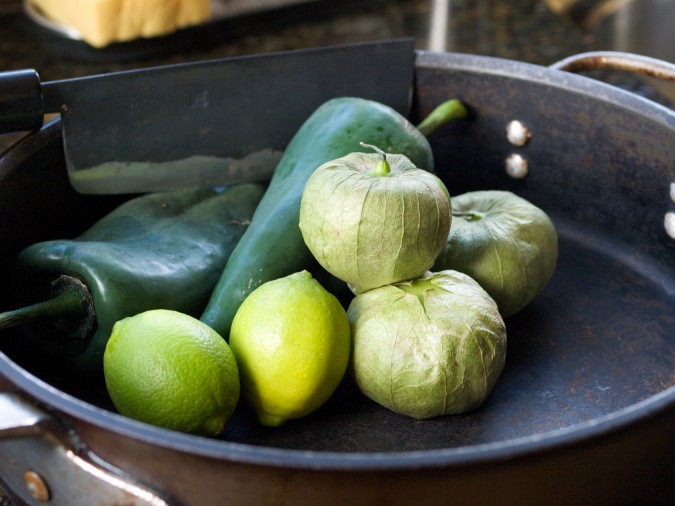
Pan with fruits and vegetables. Photo by Michael Korcuska via Flickr, used with Creative Commons commercial use license
I love to cook. I love to eat. I love technology. I love photography. My camera shoots high quality video. I like visitors to my blog.
Given the above, I’m going to start an online cooking show. I have been talking about this for years now, but this year I’m going to take action and get started.
I have access to a dedicated studio just for this project, and it’s all new and sparkling clean. It’s not someones’ kitchen – it’s dedicated to this cooking show and has in fact never been used for cooking, as that would put wear and tear on the appliances and cabinets and decor, and shorten the time everything looks brand new. It’s not quite finished yet, but soon will be. Light fixtures with properly color balanced bulbs for professional results have been acquired, and test shoots have been completed. The space looks amazing on video.
I’m going to use my Canon 5D Mark II camera to shoot the video. This is an astonishingly good video camera, as you can see from the video I’ve already posted to this blog. I will edit the video myself in Apple’s iMovie software.
I’m ordering a dedicated wok burner, since I plan to start the episodes with dishes that are cooked in a wok.
I have in mind that I’ll take the viewer shopping with me to Rainbow Grocery coop, where I do my own grocery shopping. This is the best grocery store I know of, and it’s a model for how I think the world’s grocery stores should be run. One of the best things about it is the stunning variety of offerings, and the large bulk goods section. This section contains some 800 items. I take a dozen Ball brand glass caning jars with me shopping and fill the jars directly from the bulk bins. As a result, I throw out very little in the way of packaging each week since I reuse my glass jars indefinitely. I am paid a nickel for each jar I reuse, which is a powerful incentive to avoid wasting packaging. I would increase the incentive to 25 cents for better compliance, as it’s currently quite low from what I observe in line at the checkout stand.
I want my cooking show to teach people how to cook. But I also want to introduce people to different, more efficient ways to organize commerce so that these ideas can be copied and spread.
I’ve never taken a cooking class, so I technically don’t know if what I think I know is ‘correct.’ But what I cook tastes good, and is different from Panda Express and most Asian restaurants. I like to think it’s as rewarding as what you would buy in a modest but not cheap Asian restaurant. I think that’s pretty good given I’ve only been at this a few years and haven’t taken any classes. I hope to get a discussion forum going so that I can learn from my more educated viewers that might be so kind as to correct my mistakes.

Soup, picture by Flickr user avlxyz. Used by Creative Commons commercial license granted via Flickr.
I also plan to show viewers my garden and aquaponics system I’m setting up now. I will cook from the garden as soon as possible.
I hope to develop a speaking style that permits me to inject social commentary into the lessons, in a way that’s not overbearing or that comes across as lecturing. I really want to impress on my viewers the importance of not eating out much, both for biological health and financial health reasons.
I passionately believe that cooking should again be taught in middle school and high school. Eating is universal, so everyone should be taught how to cook. It’s a tragedy I didn’t really learn to cook anything exciting until 2006.
If I get a good viewership on Vimeo and YouTube, I hope to take my show to public access television.
I recognize that the big celebrity chefs one sees on TV have devoted their lives to their craft. I have no plans to make this my life, so my show may well be awful compared to what the pros are doing. But I don’t think it will be awful. I think it will be approachable, educational and warm hearted, and that it will touch enough people to make it well worth my time. Look for the first episode by February, 2011.
Note that I went to school with an actual TV chef, but I haven’t seen him since I was 14. If he should ever stumble upon my show, I hope he is kind should he bump into me at a future high school reunion. I only know about his TV life because of Facebook, not because I’ve seen him on television…
The craziest thing about my plan is I don’t watch cooking shows and don’t own a functioning television. I didn’t even know who Emeril was until 2008.
I wonder if Julia Child boxed sets are available on DVD or Netflix on demand?
I discovered the box in the upper right to subscribe to this blog has been broken for some time, so I don’t have as many subscribers as I otherwise would have. If you liked this post, and would like to subscribe, please type in your email address in the little box in the upper right. I won’t write useless nonsense to you, I promise. Thank you.
Kevin Warnock’s Plans For 2011
This year is going to be different from the last ten years.
I view the last ten years as my ‘lost decade.’ I sold my first Internet company in 2000, and haven’t had a big success since. Yes, I invented the online office suite with gOffice.com in 2004 and got married in 2008, but I should have gotten more done in 10 years.
It’s time to reinvent my life and create a new path for myself.
Part of my plan is to dramatically expand my circle of friends and acquaintances. I am somewhat shy by nature, but I’ve gotten much less shy in recent years. I credit my wife with that because she is outgoing, and that rubbed off on me. I’m much more likely today to start up a conversation on the subway or in the grocery store line or at the library than even two years ago. I can even give my card to total strangers that I’d like to photograph. I was always scared to approach subjects, but once I started doing so, the reactions were great and it was easy and even fun. What was I so scared of?
I’d like to make friends with interesting people who are doing interesting things. In addition to meeting people in person, I view this blog as a conduit to meet the kind of people I’d like to make friends with. I’m going to do that by starting to write more frequently on more subjects, and see how that goes. So, if you read something here that strikes a chord with you and you think we’d have something in common, please send me a comment or email.
In no particular order, here’s a quick list of some of the accomplishments I hope to achieve in 2011:
- Sell my old bus conversion. It’s a 1967 MCI 5a. I drove it in 2002 to New York City and back from San Francisco, so it’s road worthy and reliable. It’s fun to drive and has a lot of character.
- Establish a vibrant household with interesting roommates where we grow our own vegetables and fish and cook together twice a week. See a description of the house and what I have in mind at SanFranciscoHouseForRent.com.
- Finish my new bus conversion to a degree where I can use it for travels. It’s a 1994 “RTS” that gets outstanding mileage and looks great. There’s a lot to do, and I’m looking for bus nuts to get involved in the project. Read about bus conversions at one of my favorite web sites BusConversions.com
- Learn more of C# so I can accept a wider variety of programming work. I am now a VB.NET developer primarily, but sadly this language is decidedly uncool, even though it still works great.
- Continue my programming consulting practice at Silveroffice, Inc., and increase my customer base.
- Install new rain gutters on my house.
- Replace my car with a diesel model I can fuel with biodiesel.
- Start to establish myself as a writer and public speaker about green homes and sustainable living. This is a big goal, and one I hope I make real progress on. I am passionate about this subject, as you will see in future posts.
- Years after graduating from Brooks Institute, make money at least six times this year selling my services as a photographer. I specialize in photographing people, either alone or in groups. I’m particularly good with couples, and I pride myself on making people feel comfortable, even if they’ve never been photographed by a photographer before. You can see my work at my photography website photography.KevinWarnock.com.
This list will keep me plenty busy. Remind me to post a follow up on December 31st, 2011 if I should forget…
Financially Stupid People Are Everywhere – Don’t Be One Of Them
Yesterday was New Years Eve – a fitting time to finish reading a good book by Jason Kelly – Financially Stupid People Are Everywhere, Don’t Be One Of Them. This book hammers home the notion that most people are stupid about money and need to radically change their view towards it and approach to getting and making most valuable use of it. I have made plenty of mistakes with money, for which I am embarrassed and not proud. Had I read and followed the advice in this book when I sold Hotpaper.com, Inc. and made a substantial pot of money, I might now have several times that pot of money. Instead I have less than all of it remaining, which Kelly would frown on I’m sure.
Jason Kelly uses blunt, provocative language to make his points. It’s unlike any financial book I’ve yet read. The message of the book is that the system is designed from every angle to quickly and completely separate people from their money, and that one must forever change behavior if one is to avoid having their money drained.
There is no particular great wisdom in this book, but even so it’s a good book and worth reading. In particular, people with lots of debt, little savings and little hope should run to the library and check out this book and read it in a day or two. It’s a quick read, and hard to put down. I have already adopted many of the suggestions in the book like paying cash for my vehicles and not carrying any balance on credit cards. But I still have a long way to go before Jason would give me a clean financial bill of health.
It’s the first day of 2001 today, so it seemed fitting to write about a book that has more potential to unshackle millions from their debt induced indentured servitude than any other single book I’ve read. Highly recommended.
Amazing drawing by 7 year old Vanessa Chow
Yesterday, December 9, 2010, I was attending a new member mixer at the Commonwealth Club at 595 Market Street in San Francisco. In the lobby there was a display of artwork by particularly young artists. The above drawing by Vanessa Chow, age 7, caught my eye as being particularly good. I would be thrilled if I could create such a good drawing. I snapped this photo with my Apple iPhone 3GS, so the quality is lower than you usually see here. Sorry about that.
I enjoyed the Commonwealth Club mixer very much. I met one of their volunteers, Angie Adler, who patiently and with great enthusiasm explained what to expect should I join as a member.
I plan to attend three upcoming events:
The first is a talk by Timothy Ferriss on January 6, 2011 at 6:30pm. He’s the very busy author of The 4 Hour Workweek, a book that advocates freeing up time for pursuits that really matter to you by working smarter and dramatically more effectively so fewer hours are required. I’ve read this book at the suggestion of my friend Gleb Budman, who works much more than four hours a week at his very cool company BackBlaze.com.
The second talk, on January 13th, 2011, is by Michael Milken, the infamous junk bond king of the 1980s. Milken invested in my first company Hotpaper.com, Inc. (now part of Purple Communications, Inc.) via his participation as a limited partner in Angel Investors LP, the also infamous Ron Conway led startup fund of the late 1990s. I’ve never met Milken, but I did read of his life in a book published soon after his famous legal troubles. I am eager to see him in person, as when I’ve read his recent work, he appears to be quite thoughtful and interesting.
The third talk, on January 25, 2011, is by Novella Carpenter and Joan Gussow. I don’t know of Joan, but I did read earlier this year Novella’s fascinating book Farm City. In Farm City, Novella describes how she and her boyfriend raised two full size pigs in their apartment backyard in a dangerous part of Oakland, California. The book is riveting as she describes how they dumpster dove behind fancy restaurants for food for the pigs. Full size pigs eat LOTS of food, and she could not have afforded to purchase food for them. One of the craziest stories she related is when a homeless person walked up to her while she was scooping up discarded fish parts into buckets behind a seafood restaurant. As she was scooping the slop from black plastic garbage bags, the homeless man tried to give Noella a crumpled dollar bill, to relieve what he saw as her sad plight of being reduced to scavenging for such unappealing food for herself to eat. She declined the extraordinary offer.
She’s a really funny writer, and the book still warms my heart months after I finished it.


